This recipe for hamine, also called beid hamine or hamine eggs, practically cooks itself while you sleep!
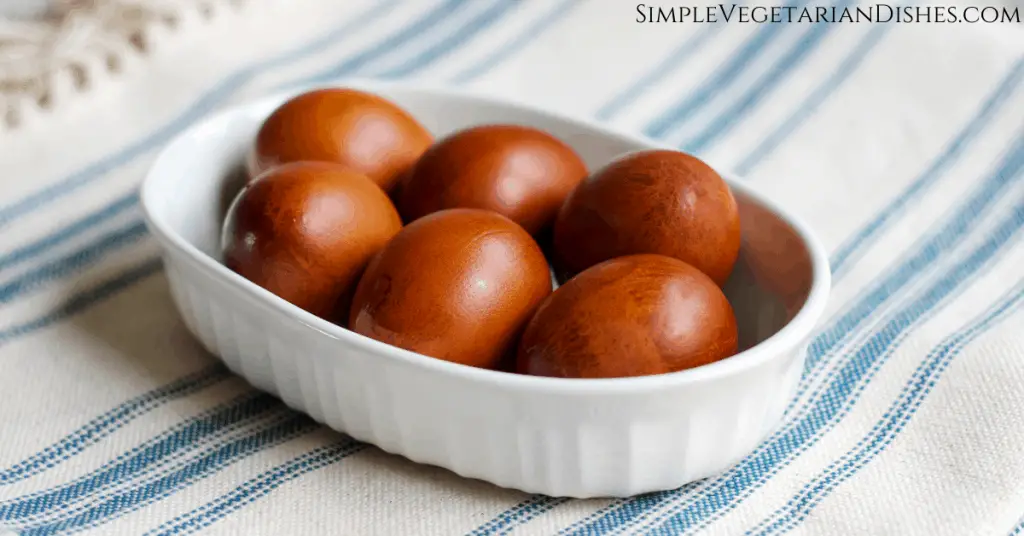
The eggs simmer slowly in their broth and take on a browned flavor, coming out soft and creamy. The egg yolks are fully cooked, as you’d expect after a night of cooking.
If you’ve ever thought that traditional hard boiled eggs can be a bit rubbery or dry, you may enjoy these!
What does hamine taste like?
I kept hearing about the browned taste of hamine, but was curious what people meant.
Was it a grilled flavor? Not really.
The best way I can describe it is that the eggs taste the way the air smells where popcorn is popping (and perhaps slightly burning).
I ate it the Israeli way, with hummus, and can confirm that the two taste amazing together. The combination reminded me quite strongly of a slightly smoky deviled egg. For contrast, try serving with wedges of lemon to amp up the flavor even more.
Hamine also look and taste similar to the eggs often found in ramen, with their attractive brown color. However, hamine are a bit milder in flavor.

How to Serve Hamine
Traditionally, hamine is added to stews and soups.
For example, you could try them in ramen for a fusion meal.
These hamine eggs would make a truly delicious egg salad!
Spread hummus over them for a protein-packed and very tasty meal or power snack.
Try serving hamine with ful medames (Egyptian stewed fava beans, also called Egyptian brown beans, which is often served with wedges of lemon) for a protein-packed meal.
Enjoy hamine for breakfast or any time of the day.
If you found this article helpful, please consider joining my email newsletter community for new recipes delivered straight to your inbox!
What is hamine or beid hamine?
Hamine, or beid hamine, are long simmered eggs from Sephardic Jewish cuisine. People traditionally cook hamine overnight Friday into Saturday morning.
This way, they can serve (and eat!) this specialty on the day of Shabbat, Saturday, which is the day of rest, when cooking is prohibited (the Sabbath or Shabbos).
This style of hamine eggs is found throughout the Mediterranean diaspora in the cuisines of Jewish communities, including in Greece, Turkey, Morocco, and Tunisia.
In Egypt, people call them beid hamine or beid haouzi. In Spain, they go by huevos haminados, huevos sefardies, or huevos enhaminados.
Traditional Cooking Methods
The Talmud, a central Jewish text full of laws regarding practical matters in everyday life, mentions roasting eggs in hot ashes or under sand hot from the sun.
Historically in Spain, people buried the eggs in the hot ashes of their open hearths, near the stew pot.
Currently in North Africa, some people still make hamine by burying eggs in sand or ashes, while others have taken an easier and less messy path and cover them with aluminum foil, then bake them overnight in the oven at a low temperature.
Certain Ashkenazi communities in southern Germany and Austria cook hamine by layering hot coals and eggs in terra-cotta pots, sealing the pots with a simple flour and water dough, and baking them in the oven alongside their Shabbat stew.
(If you are up for a fun project, you can try cooking these in a flower pot, but don’t worry: you can also just use a saucepan.)
More recently, people simply follow Claudia Roden’s recipe in her 1986 cookbook, A Book of Middle Eastern Food.

Hamine in cuisine
Hamine eggs are traditionally added to the Shabbat stew, hamin (named with the Aramaic word for hot).
This type of hamin stew (called variously cholent, tcholent, dafina, tafina, pkaila, or simply hamin), became the traditional meal of the day of rest for the same reason as the hamine eggs that are added to it.
People make the stew the night before (Friday), and as long as it was edible before the Shabbat began, they could keep it hot and simmering on Saturday.
The Talmud also mentions using whole eggs in meat stews on the day of rest. People eventually began cooking the eggs in the stew.
This yielded very nice hamine, since when you cook the eggs in ash or sand, they shrink. In contrast, this does not happen when you cook eggs in the stew, due to all the liquid.
There was one problem with this, however.
Talmudic law decrees that eggs cooked in a meat stew cannot be eaten with dairy products. To solve this dilemma (and not break Jewish law), Egyptian Sephardim started cooking the eggs in water along with the onion skins leftover from the week’s cooking.
Hamine eggs or beid hamine are the first dish of the Passover Seder, the ritual feast marking the beginning of Passover. (Passover is often close in time to Easter, sometimes even the same weekend.)
In Israel, people eat them with hummus. In Yemen, they use a fenugreek relish called hilbeh. Hamine are usually a breakfast food in Egypt, but people also eat them in sandwiches.
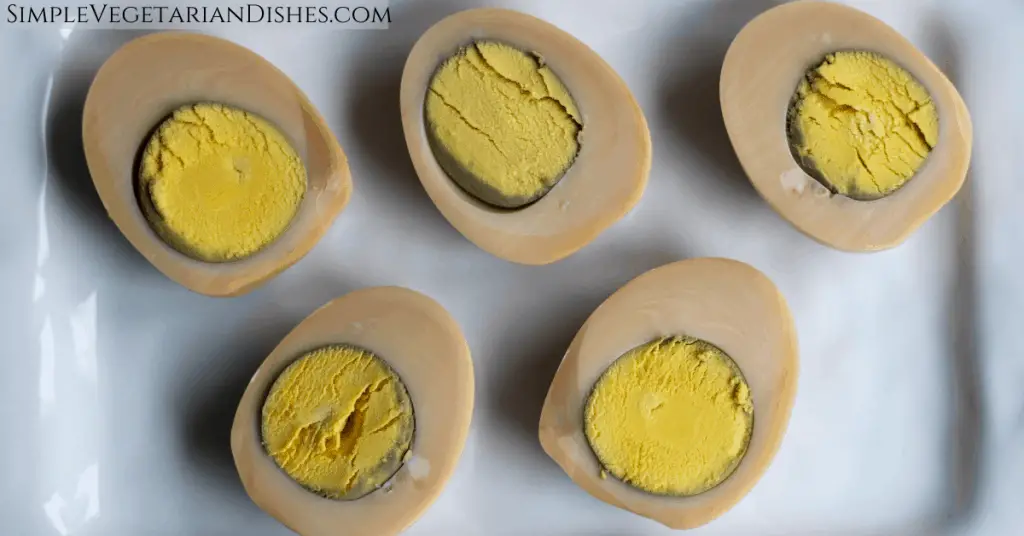
A Note on the Recipe
Cook times for hamine start at 6 hours, are often 8, sometimes 10, or even 18 hours!
However, the most common cook time is the very precise directive to cook them overnight. This measurement, of course, is quite variable.
It appears that the browning effect only happens at around the 8 hour mark. I cooked mine for 10 hours.
The next ingredient, the onion skins, are supposed to help protect the egg, much like an additional membrane to the one naturally inside the shell.
The amount used is the onion skins from the week, which again varies quite widely depending on how much and what you cook. If you have a large pot, you could certainly add more than I did.
The oil is optional, but it slows the evaporation of water and makes the eggs easier to peel. I will say these eggs peeled much more easily than most hard boiled eggs I’ve peeled.
Coffee was not originally part of the recipe, but over time, some Sephardim in Greece began adding coffee or tea leaves to increase the brown coloring of the eggs.
For a fun variation, try dinosaur eggs. Simply crack the shells partway through cooking to create a marbled effect on the finished product.
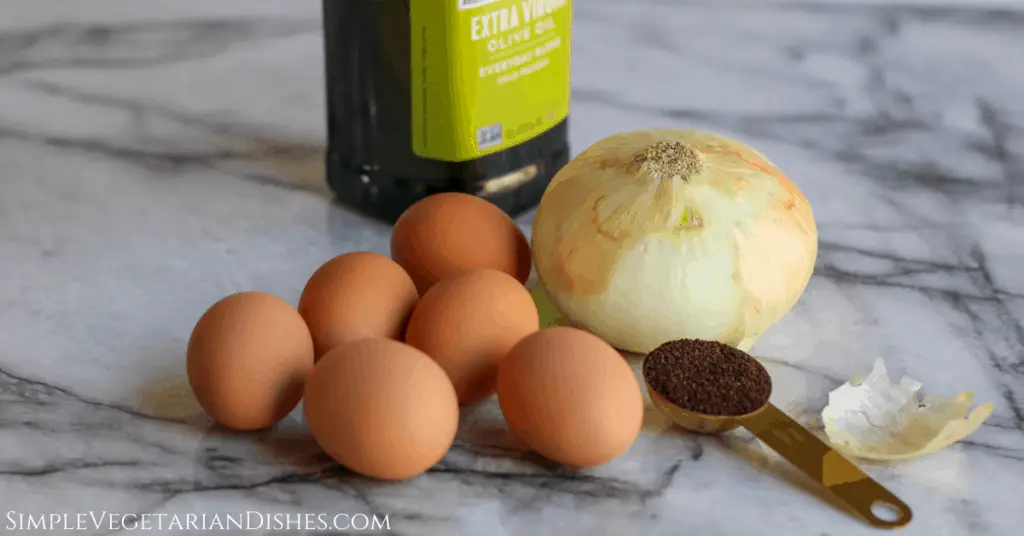
Eggs in History
Numerous writers from Antiquity have written about eggs, attesting to their important in the human diet.
These writers include the physician Galen, whose claimed that people’s diets should never lack eggs, especially the elderly.
Romans ate eggs in desserts, sauces, and for breakfast.
They invented the omelette, which they called ovemele, a combination of the words for eggs and honey, which they used to sweeten the dish.
Roman considered eggs good luck, and often put eggshells underneath their floors (talk about walking on eggshells . . . ).
If you’d like a modern perspective on the health benefits of eggs, check out this article by healthline.
Of course, people don’t just eat eggs, but chickens, too.
The philosopher Aristotle and the historian Diodorus Siculus were quite impressed with the Egyptian egg incubators, in which people could hatch up to 4,500 fertilized eggs in two or three weeks.
If you’re curious about how they worked and still work to this day, check out this article, “The Egyptian Egg Ovens Considered More Wondrous Than the Pyramids.”
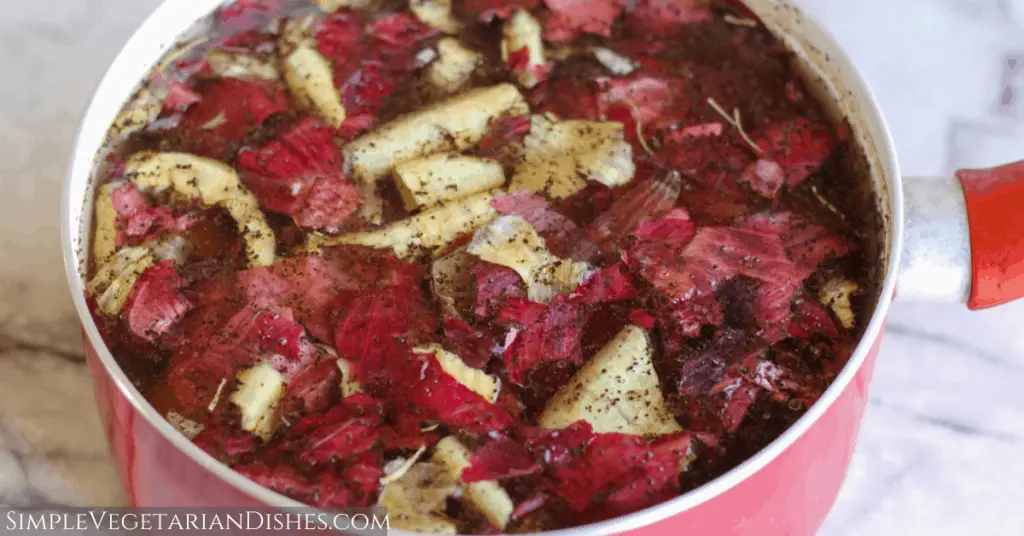
What kind of pot should I use?
Warning: your kitchen may smell a bit funky while these are cooking. I would not recommend making these immediately before having company over.
If you leave some windows open and go to bed, then make sure to air out your home in the morning, you should be fine.
Part of this depends on what kind of pot you use. I used a saucepan, as some people recommend.
The lid that went to the saucepan broke, so I used the lid to an egg poaching pan, which has a small hole to let out steam. I thought this would work well as the eggs are supposed to simmer, not boil.
Some people use a slow cooker or instant pot for making hamine, which sounds wise to contain the cooking scent.
I looked up the temperature of the slow cooker setting on my instant pot, and it seemed slightly high, but since others have had success with that method, I’m sure it would be fine. The important thing is to maintain steady heat over a long cooking time.
Related Egg or Egg-like Breakfast Posts
Didn’t leave 10 hours until you want to eat? Try this crustless tomato pie instead!
You may also enjoy my broccoli frittata muffins.
Like the idea of eggs, but have tofu in your fridge? Here’s my silken tofu scramble recipe.
Pin it for later!
Hamine Ingredients
Before you begin, you will need:
Edible Ingredients
- One dozen eggs
- The skin from three onions
- 1 Tbsp coffee grounds (optional)
- 1 Tbsp olive oil
- Water
Tools and Equipment
- Large pot with lid (saucepan or dutch oven)
- Slotted spoon for removing eggs when done
- Measuring spoons
How to Make Hamine Eggs
- First, add the eggs, onion skins, coffee grounds, and oil to the pot.
- Then, cover the eggs generously with water so they will remain covered even after some evaporation. I filled my pot very full as I wasn’t sure how much would evaporate, but it was less than I feared.
- After that, bring the mixture to a boil and reduce the heat to a simmer.
- Then, leave simmering for 10 hours, or overnight.
- Use a slotted spoon to take out your hamine eggs, and allow them to cool.
- Finally, peel and enjoy!
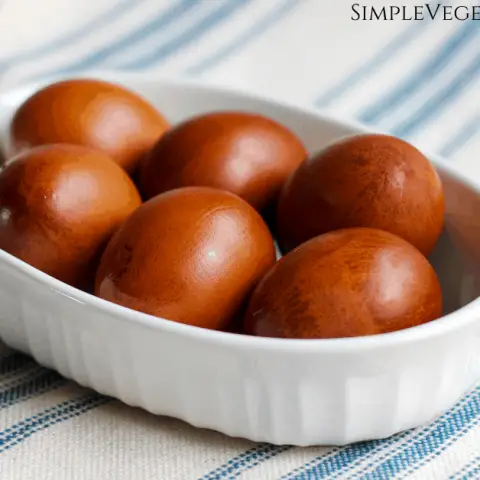
Hamine - Easy Overnight Eggs You Can Sleep On
This recipe for hamine, also called beid hamine or hamine eggs, practically cooks itself while you sleep! The eggs simmer slowly in their broth and take on a browned flavor, coming out soft and creamy. If you've ever thought that traditional hard boiled eggs can be a bit rubbery or dry, you may enjoy these!
Ingredients
- 12 eggs
- Skins from 3 onions
- 1 Tbsp coffee grounds
- 1 Tbsp olive oil
- Water
Instructions
- Add the eggs, onion skins, coffee grounds, and oil to the pot.
- Cover the eggs generously with water so they will remain covered even after some evaporation. I filled my pot very full as I wasn't sure how much would evaporate, but it was less than I feared.
- Bring the mixture to a boil and reduce the heat to a simmer.
- Leave simmering for 10 hours, or overnight.
- Use a slotted spoon to take out your hamine eggs, and allow them to cool.
- Peel and enjoy!
Nutrition Information:
Yield: 12 Serving Size: 1Amount Per Serving: Calories: 92Total Fat: 6gSaturated Fat: 2gTrans Fat: 0gUnsaturated Fat: 4gCholesterol: 186mgSodium: 72mgCarbohydrates: 3gFiber: 0gSugar: 1gProtein: 7g

Lisa
This looks amazing! I have never heard of these but we love hard-boiled eggs and pickled eggs so I will definitely give these a try. Very interesting!
TaraSVD0
Thank you Lisa! I hope you like these hamine eggs! I also really enjoy hard-boiled, deviled, etc. eggs.
Julie
I have never heard of these! I am very intrigued and I think I will try them soon!
TaraSVD0
Thanks Julie, I hope you enjoy these hamine eggs!